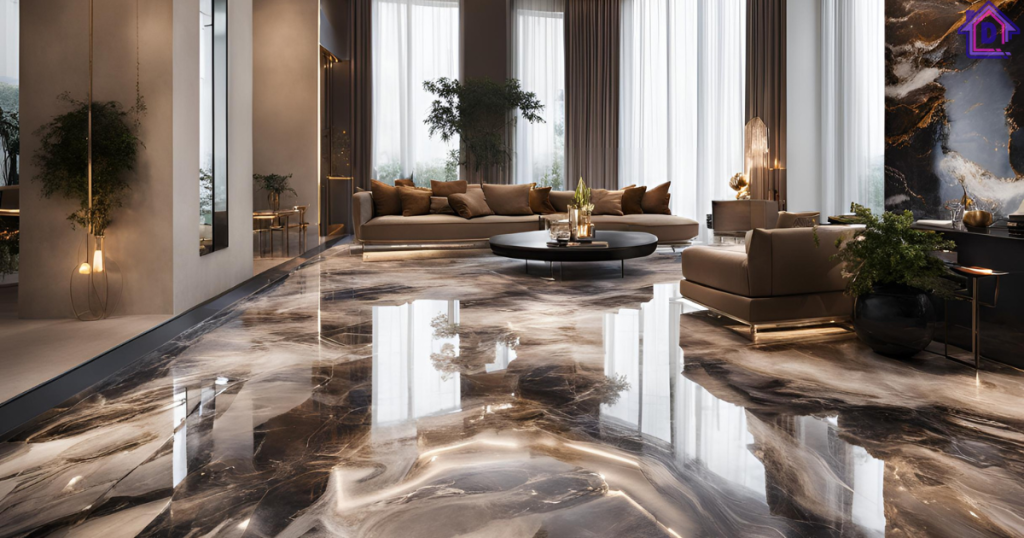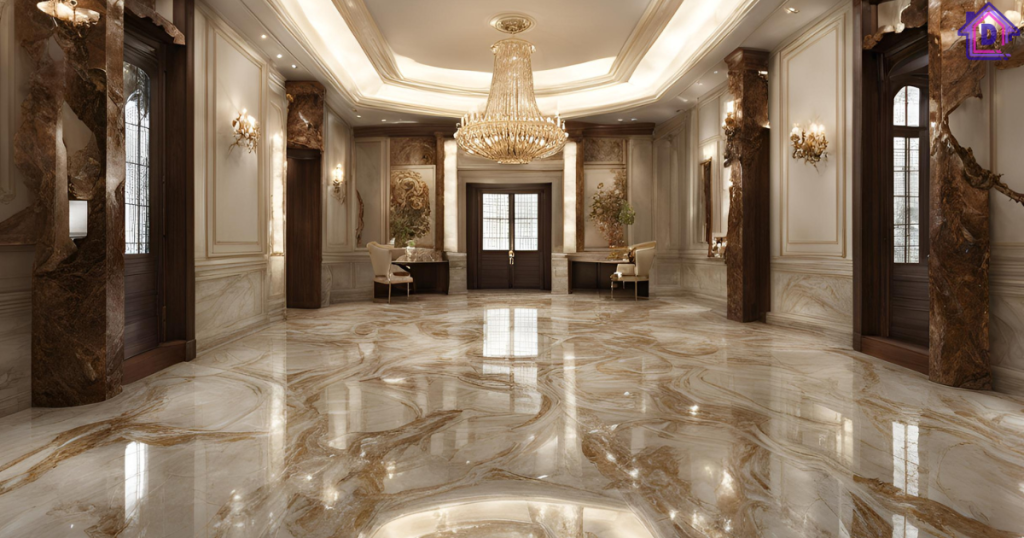Thinking about upgrading your floors and want something both beautiful and durable? Marble epoxy flooring might be just what you’re looking for! This trending solution offers a stunning, high-gloss finish that can elevate any space, from homes to offices. In this blog post, we’ll explore everything you need to know about marble epoxy floor, including installation tips, costs, and maintenance. Whether you’re a homeowner, designer, or contractor, you’ll find valuable insights to help you make an informed decision.
What is Marble Epoxy Flooring?
Marble epoxy flooring is a type of resin-based floor coating that mimics the luxurious appearance of natural marble. By combining epoxy resin with different pigments, installers can create custom, marble-like patterns on various surfaces. This flooring option has become increasingly popular for its aesthetic appeal and resilience, making it a preferred choice for those seeking high-gloss flooring options.
Marble Epoxy Floor Kits
Thinking of taking the DIY route? Marble epoxy floor kits are available for homeowners and enthusiasts who wish to install their floors themselves. These kits typically include everything you need—epoxy resin, pigments, and detailed instructions—to create a stunning marble effect.
Key Components of a Marble Epoxy Floor Kit
- Epoxy Resin: The base material that provides the strength and durability of the floor.
- Pigments: Used to achieve the desired marble effect. You may make original patterns by combining different colors.
- Application Tools: Items such as rollers, brushes, and mixing sticks that assist in the application process.
- Instructions: Step-by-step guidance to ensure a successful installation.
Using a kit can be a rewarding experience, especially for those who enjoy hands-on projects. However, it’s important to follow the provided instructions carefully to achieve the best results.
Marble Epoxy Floor Coating
When it comes to marble epoxy floor coatings, there are several factors to consider to ensure a flawless finish. Proper preparation and application are key to achieving the marble look that sets this flooring apart.

Steps to Apply Marble Epoxy Floor Coating
- Surface Preparation: Clean and level the area where the epoxy will be applied. Any dust, dirt, or imperfections can affect the final look.
- Mixing the Epoxy: Combine the resin and hardener according to the manufacturer’s directions. Add pigments to achieve the desired color and pattern.
- Application: Apply the epoxy evenly over the surface using a brush or roller.Work in sections to maintain consistency.
- Curing: Give the epoxy the prescribed amount of time to cure. This is essential for both beauty and durability.
- Finishing Touches: Sand any rough spots and apply a clear coat for added protection and shine.
With these steps, you can achieve a beautiful, marble-look epoxy floor that enhances your space’s aesthetic and functionality.
Cost of Marble Epoxy Floors
The cost of installing marble epoxy floors can vary based on several factors, including the size of the area, the complexity of the design, and labor costs if you opt for professional installation.
Factors Affecting the Cost
- Size of the Area: Larger spaces will naturally require more materials, increasing the cost.
- Design Complexity: Intricate designs or custom patterns may require additional time and materials.
- Professional Installation: While DIY kits are available, hiring professionals can ensure a flawless finish but at a higher cost.
- Quality of Materials: Higher quality resins and pigments may come at a premium but often offer better durability and finish.
On average, you can expect to pay between $3 to $12 per square foot for marble epoxy flooring. It’s advisable to get quotes from several contractors to find the best price for your project.
Advantages and Disadvantages of Marble Epoxy Floor
Before choosing marble epoxy flooring, it’s important to weigh its pros and cons. The table below highlights the key advantages and disadvantages to help you make an informed decision.
| Advantages | Disadvantages |
| 1. Aesthetic Appeal: Offers a luxurious, high-gloss marble look. | 1. Costly Installation: High upfront cost compared to some other flooring options. |
| 2. Durability: Resistant to cracks, scratches, and impacts. | 2. Requires Expertise: Professional installation is necessary for the best results. |
| 3. Seamless Finish: Creates a smooth, joint-free surface. | 3. Slippery When Wet: The glossy surface can pose a slip hazard. |
| 4. Easy to Clean: Resistant to stains and easy to maintain. | 4. Susceptible to UV Damage: Prolonged sunlight exposure can cause yellowing. |
| 5. Customizable: Wide variety of colors, patterns, and finishes. | 5. Repair Challenges: Difficult to repair localized damage seamlessly. |
| 6. Chemical Resistance: Can withstand harsh chemicals. | 6. Installation Time: Requires significant time to cure properly. |
| 7. Hygienic: Non-porous surface prevents mold and bacteria growth. | 7. Not Eco-Friendly: Epoxy materials are not biodegradable. |
| 8. Long Lifespan: Can last for decades with proper maintenance. | 8. Temperature Sensitivity: Extreme heat may cause damage over time. |
| 9. Versatile Application: Suitable for homes, offices, and commercial spaces. | 9. Initial Odor: Emits strong fumes during installation. |
| 10. Enhances Property Value: Adds a luxurious touch that attracts buyers. | 10. Heavy Preparation Needed: The substrate must be thoroughly prepped. |
Can We Do Epoxy on Marble Floors?
If you already have marble floors but want to add the benefits of epoxy, you might wonder if this is possible. The answer is yes, but there are specific steps you need to follow to ensure success.

Steps to Apply Epoxy Over Marble
- Surface Preparation: Thoroughly clean the marble surface and address any imperfections to ensure proper adhesion.
- Primer Application: Apply a primer designed for use on marble to improve adhesion.
- Epoxy Coating: Once the primer is dry, apply the epoxy coating following the standard steps for epoxy installation.
- Curing: Allow sufficient time for the epoxy to cure before using the area.
Applying epoxy over marble can enhance the floor’s durability while maintaining its elegant appearance.
Which Epoxy is Best for Marble?
Choosing the right epoxy is crucial to achieving the desired results. Not all epoxies are created equal, and selecting one that suits your needs is essential.
Recommended Epoxy Types
- High-Gloss Epoxy: For those seeking a shiny, reflective finish, high-gloss epoxy is an excellent choice.
- UV-Resistant Epoxy: If the floor will be exposed to sunlight, UV-resistant epoxy prevents yellowing and maintains the color.
- Self-Leveling Epoxy: This type of epoxy creates a smooth, even surface, ideal for marble-like patterns.
- Water-Based Epoxy: An eco-friendly option that emits fewer volatile organic compounds (VOCs) during application.
Consulting with professionals or suppliers can help you select the best epoxy for your specific requirements.
[hurrytimer id=”824″]
Conclusion
Marble epoxy flooring offers a versatile and attractive solution for those seeking durable, high-gloss flooring options. With various designs and installation methods, it’s suitable for a wide range of spaces, from homes to commercial properties. By understanding the benefits, costs, and installation steps, you can make an informed decision that aligns with your needs and preferences.

